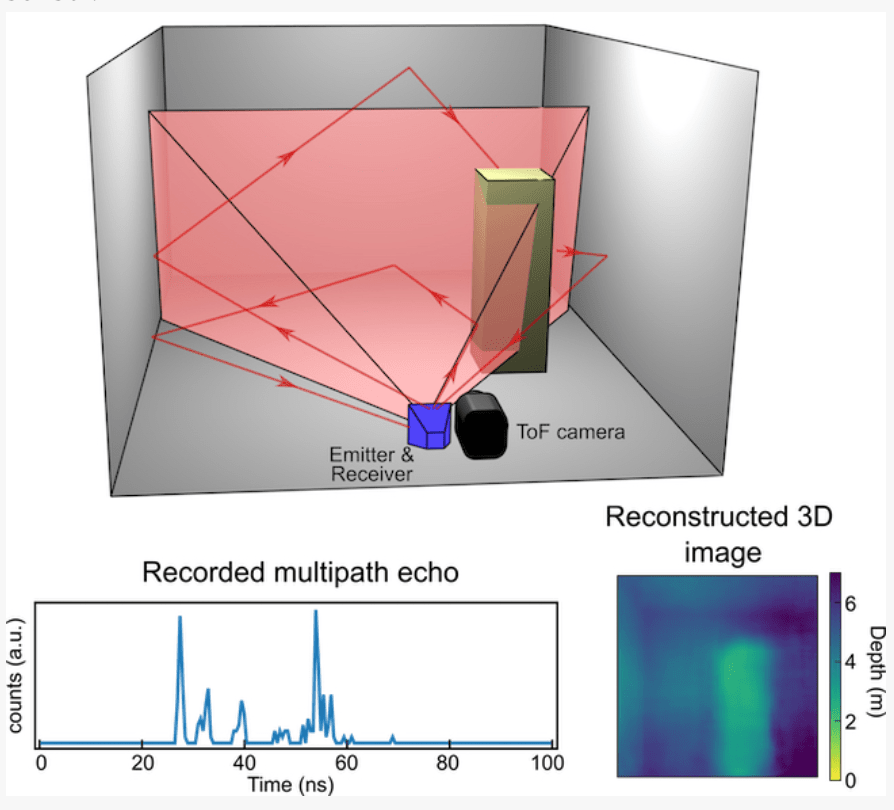The machine-learning algorithm developed at Glasgow University uses reflected echoes to produce 3D pictures of the surrounding environment. The researchers say smartphones and laptops running the algorithm could detect intruders and monitor care home patients. [Read: 3 new technologies ecommerce brands can use to connect better with customers] Study lead author Dr Alex Turpin said two things set the tech apart from other systems: The system analyses sounds emitted by speakers or radio waves pulsed from small antennas. The algorithm measures how long it takes for these signals to bounce around a room and return to the sensor. It then analyzes the signal to calculate the shape, size, and layout of the room, as well as pick out the presence of objects or people. Finally, the data is converted into 3D images that are displayed as a video feed. The system functions in a similar way to how bats use echolocation to navigate and hunt. The mammals send out sound waves that bounce back when they hit an object. The bats then interpret the echoes to determine the object’s location, size, and the direction (if any) that it’s moving. The researchers believe their algorithmic recreation of this natural ability could greatly reduce the cost of 3D imaging. You can read the research paper in the journal Physical Review Letters. Greetings Humanoids! Did you know we have a newsletter all about AI? You can subscribe to it right here.
